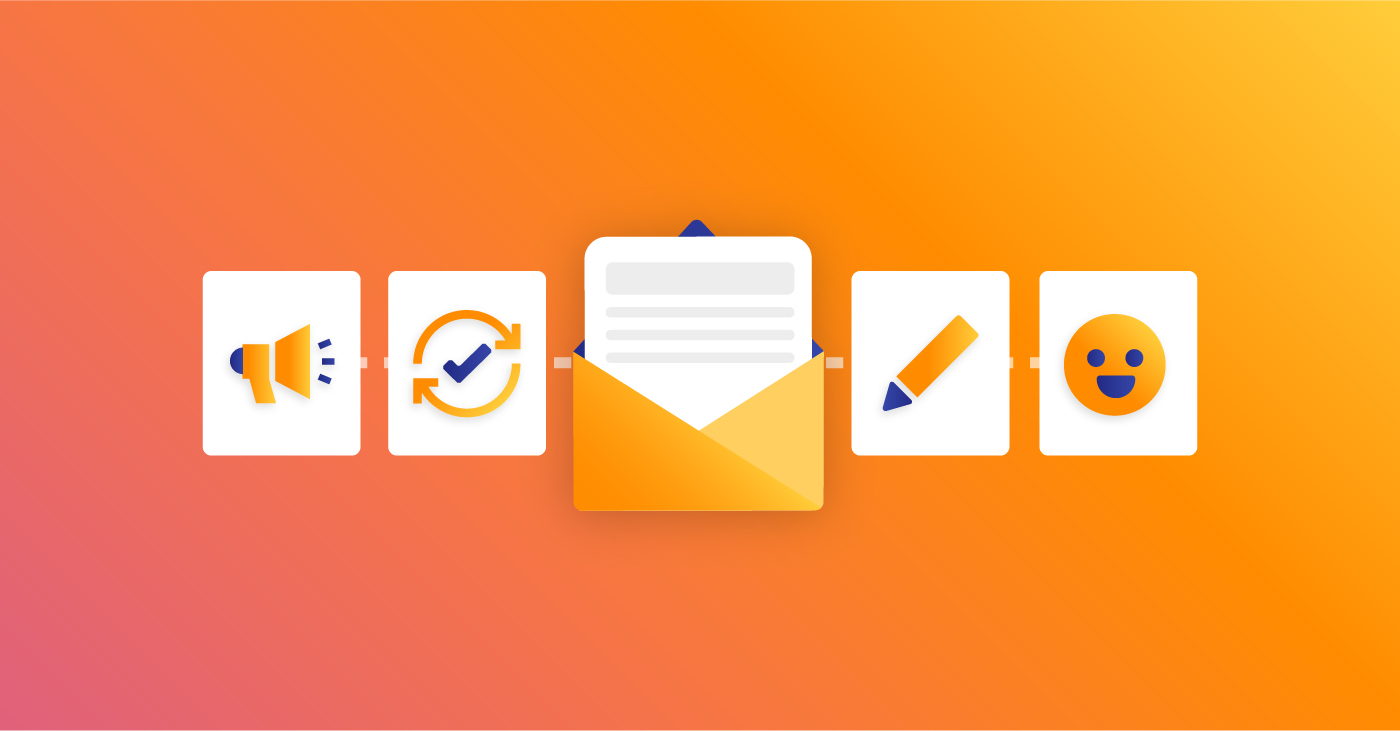Reminder Emails: How to Politely Craft a Nudge Email in Every Situation
September 7, 2022 6 min read

There’s nothing more annoying than waiting, especially for action from someone else in a work situation. The action or response you are waiting for could impact the work you are doing and you could find yourself at an impasse until that person takes action or sends you the information you need.
In these situations, it’s tempting to get angry and to show that anger in hopes it will yield a quicker turnaround. However, being professional means showing respect in the workplace and finding a way to politely remind your colleague of your request for action or information.
There are many different types of emails out there. But reminder emails are unique in that they can be internal as well as external. Sending reminder emails to colleagues is not uncommon, as well as sending reminder emails to sales prospects when asking them to review a contract, download a piece of content, or sign up for your webinar.
No matter the situation, any reminder or nudge email should be friendly but firm while maintaining that professionalism and politeness we mentioned. So, just how should you craft a polite email that will urge the person to respond? Read on to find out.
Why Would you Need to Send a Reminder Email?
There are many situations when a reminder email may be needed. However, we’ve never been more connected than we are now, and there are tons of ways to interact with others than by sending an email. How do you know when a situation warrants an email touchpoint? The following are some examples in which you may want to send a reminder email:
- A customer is late on service payment and you want to nudge them without damaging the relationship.
- There is an upcoming event or meeting and you need to know whether the person you invited is attending.
- You’re waiting for data or information from a colleague or partner and can’t proceed with a particular piece of work without it.
- You owe a supplier money or shipment tax but can’t pay them until you receive a full invoice.
- Someone has missed a deadline, or one is looming, and you need the person to be aware.
- You have applied for a new job or for a promotion and haven’t heard anything. A well-crafted follow-up email can show your enthusiasm but you don’t want to be too pushy.
Of course, there are many more examples of why you might need to send a reminder email but that list helps give you some idea of potential situations where they will be needed.
When to Send your Reminder Email
There is no definitive answer to this question. When you choose to send a reminder email depends very much on individual circumstances. For example, if it’s regarding a due payment, then you would normally send the email on the first business day after the payment should have been made and that rule could also hold for a missed deadline. Also, if you’re a small business owner, keeping track of appointments for several customers isn’t easy. That’s why business owner prefers using appointment reminder apps to automate this process.
If you are waiting for information or data to proceed with a task, then you should be conscious of any deadline that you have and how long it will take to complete the task. For job-related emails, you may choose to wait till a significant period has elapsed since any interview or any timeline mentioned by the potential employer.
Perhaps less important than when you say something is what you say and how you say it. This is true for email outreach and reminder emails alike. So, just how do you craft that perfect reminder email?
4 Elements for Writing a Polite Reminder Email
The first and most important rule is to ensure that at no point your email comes off as aggressive or threatening, even if you are chasing a payment. While you do want to include an element of firmness, it should be done in a polite and friendly way.
Although you want the person to take action, you don’t want them to be annoyed at your tone. Each reminder email you send should be clear and kind. You want your recipient to take the desired action instead of ignoring your email. The best email reminders have these four core elements:
1. Email Subject Line
You need to remember that this is the first thing the receiver will see, and a well-thought-out email subject line is what makes people open an email. Ideally, you want the subject line to be personalized, relevant to the content, and to give the sense of urgency you want.
Think about the emails you receive every day, both from unknown senders and from people you know. What makes you open an email instantly or prioritize it? Identifying these characterizations can guide you on what your subject line should look like. Here are some examples:
- Quick reminder about that data requested
- Still need an RSVP for the event on the 5th. Are you coming?
- Follow up on my interview on the 9th.
- Reminder that the report is due on the 12th.
2. Greeting
How you greet someone can set the tone for the rest of your email. You should also think about what your relationship is with the receiver and whether your greeting should be formal or informal. For example, “Dear sir/madam” is extremely formal and unless that is what your organization normally uses when dealing with customers, I’d recommend not going that route.
A simple hi and the person’s name should suffice. But whatever you do, always include a greeting. Getting right into the body of the email could come off as impolite and too eager.
3. Body and Request
Now comes the important part where you provide the reason and context for your email. Again, it doesn’t matter how frustrated or annoyed you are by any delays; keep the body of your email friendly and polite. There could be numerous reasons why the person hasn’t responded, and a lack of response could have a reasonable explanation.
You can either include your request in the initial body of the mail or have it as a follow-up section. Here are some examples of how to word your mail:
- I’m still awaiting May’s invoice from you. Please send it over when you can; otherwise, I cannot issue payment.
- Just following up on the information I sent over last week. Are you still interested?
- Could you please send the requested data, ideally by Friday?I have to plan and write the report for the referral marketing program, which is due to the client by next Tuesday.
- Just a reminder about our event on the 24th. Will you be able to attend? We’d love to see you. Please RSVP if we’ll see you there!
- For the planned departmental meeting on the 2nd, could you please send over any items you want discussed by end of week?
4. Signing Off
Just like greetings, sign-offs are important to include, as neglecting them can make you come off as impolite or angry.
With your sign-off, you want to maintain the same friendly and polite tone that you’ve used throughout your email. You can include a gentle, last reminder of what you need, and there can be two sections to your sign-off: a closing and an actual goodbye. Examples of the first section can include:
- Thanks in advance for the requested info.
- Hope to see you on the 31st!
- Thanks in advance for the prompt delivery of the products.
- Looking forward to your reply.
Actual sign-offs can be short and sweet but still polite:
- Thanks again,
- Best,
- Talk soon,
The Takeaway
Good business communication should be a foundation for how you work, and that includes your email marketing and outreach.
Whether you’re emailing a colleague, client, or sales prospect, you should always be polite, no matter how frustrated you may feel at the lack of response. Use the tips offered above to help keep your cool and follow up in an appropriate way to help you get the response you’re after.
Author Bio
Richard Conn is the Senior Director for Demand Generation at 8×8, a leading communication platform with an integrated contact center, voice, video, and chat functionality. It’s also the provider of the best cloud phone systems for small businesses. Richard is an analytical & results-driven digital marketing leader with a track record of achieving major ROI improvements in fast-paced, competitive B2B environments. Richard Conn also published articles for domains such as ZoomShift and Upside. Check out his LinkedIn.







